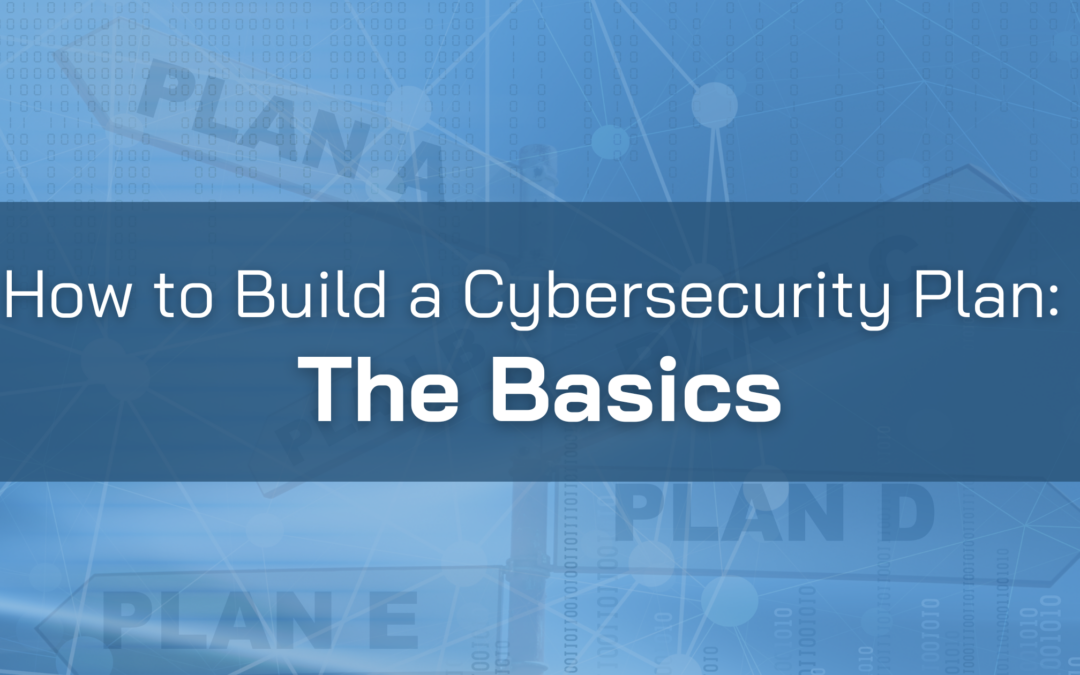If your company has not prioritized cybersecurity in the past, starting the process can seem daunting. It is crucial to create a plan that will help your company in the face of potential attacks. What risks does your company face? What plans are currently in place? How does your technology compare to current technology? What will you do if your company faces a cyber attack? Keep reading for a list of basic steps to build a cybersecurity plan that will assist you in keeping your people, data, equipment, and assets safe. It’s important to keep in mind that while these are basic steps, a cybersecurity plan is uniquely tailored to your company by a team of cybersecurity experts–there is no one-size-fits-all solution.
1 – Risk Assessment
The first step is to complete an assessment of the potential threats and vulnerabilities applicable to your company. In some cases, this assessment may be targeted to reach a specific goal, and in others, it will be focused on a general image of cyber risk. Working with a team of experts to conduct this assessment is essential. While it is impossible to identify each and every risk factor, cybersecurity specialists will be able to identify vulnerabilities more efficiently than someone within your own organization as they are acutely aware and specifically trained to detect and avoid cyber threats. In addition, the risk assessment will help you understand where your company is and where you want to be from a risk tolerance or industry standard perspective.
2 – Rely on the Cybersecurity Experts
Most companies, especially small and medium-sized organizations, are less likely to have the expertise or workforce to thoroughly conduct an audit or develop a solid plan for ongoing security. Therefore, it’s critical to find a trusted partner with years of expertise in cybersecurity to help you create a plan and implement it while also having the ability to provide consistent monitoring.
Work with a team of cybersecurity experts to use your company’s risk assessment to develop a plan of security measures, procedures, and guidelines your company can follow to increase its security. You can then work with these experts to determine the efficiency of the security implemented and how industry changes impact your security.
3 – Implement Security
The next step is to implement the security measures in your audit and security plan. It may not be possible financially or structurally to implement all of the recommended measures, so it is crucial to prioritize vulnerabilities and secure those first. It is also important to implement security features that protect data, hardware, and software equally. Implementing the recommended security measures is the first step in actively avoiding cyber threats. It is key to remember that this is a process, and having a cybersecurity expert monitor the success of the measures is a beneficial way to ensure that your company is actively thwarting cyber threats.
4 – Incident Response
Even the best cybersecurity plan cannot avoid all attacks. Therefore, you also need a solid incident response plan that you can put in motion quickly to contain the threat and restore systems. This part of the plan will include backups (offsite) and finding and eliminating any malware, ransomware, or other intrusion tools. The development of your incident response plan goes hand–in–hand with your security plan, especially when it comes to the importance of securing essential company information and assets.
5 – Security Audits
Before an attack occurs, conduct regular security audits, and test your cybersecurity plans with planned scenarios and dry runs. In addition, you will want to ensure that your policies and procedures are current and that everyone is fully trained in their role and how to respond to threats.
Additional Cybersecurity Tips
Along with your cybersecurity plan, you can do other things to help enhance your protection. Some additional cybersecurity tips include:
Train your employees (even management) in your security measures and cybersecurity in general. Many intrusions occur due to employee error. Teach your staff about phishing emails and social engineering so they will know what to watch out for and how to respond. It is important to remember that what might seem like an obvious measure to one person might be a new concept for another–general training ensures that your team is educated about cyber risks, which ultimately has the potential to save your company from targeted attacks.
Identify your most critical digital assets and be sure to store files off-site or on a segmented section of your network to protect them in the event of an attack.
Always rely on a trusted team of cybersecurity experts to help you develop and implement your cybersecurity plans. Socium Solutions is a full-service cybersecurity firm protecting companies around the globe.

